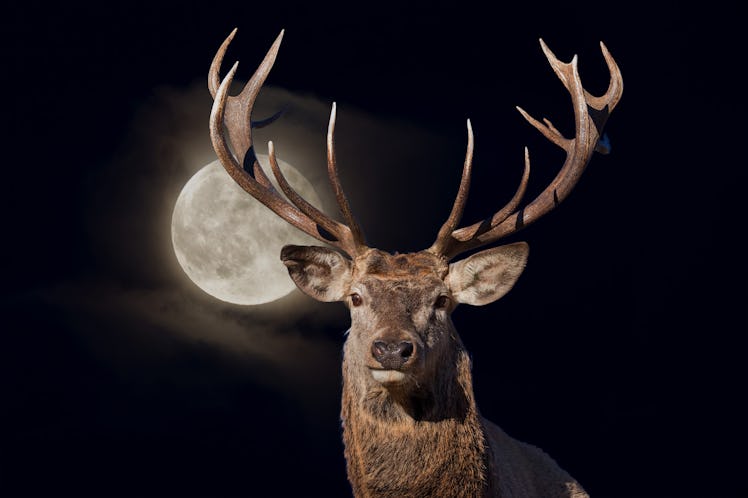July’s Full ‘Buck’ Moon Is Coming — And It Will Wow You
July’s full moon is also a supermoon — the biggest and brightest supermoon of 2022.

Now that summer is in full swing, families are spending more time outside in the sun and evenings under the stars. It can be wonderfully relaxing to unwind while look up into the never-ending sky. But for those who love astronomy, July also means a really cool full moon: the Buck Moon. Here are all the details you need so you don’t miss the sky show.
What is a Full Buck Moon?
According to The Old Farmer’s Almanac, July’s Buck Moon gets its name from the antlers that buck deer grow around this time of year. “Bucks shed and regrow their antlers each year,” the site explains, “producing a larger and more impressive set as the years go by.” Because antlers emerging is such a visible nature event in July, it makes sense to name the full moon after it — similar to May’s Flower Moon.
There are several other names for July’s full moon. These include the Salmon Moon, Berry Moon, and Thunder Moon, named for the stormy weather during summer, according to The Old Farmer’s Almanac.
This month, the Buck Moon is also a supermoon, meaning that it will orbit at its closest point to Earth. But it’s not just any ol’ supermoon. The Buck Moon this year will orbit closer to our planet than any other moon this year. It’s going to be the biggest and brightest moon of 2022.
The Old Farmer’s Almanac points out that although the moon will be the biggest one we see this year — appearing 7% larger than any other full moon — it’s not a difference we can pick up with our eyes. But a fun fact, nonetheless.
When and how can I watch the Full Buck Moon?
To catch the Buck Moon this month, you’ll want to set a calendar reminder for Wednesday, July 13. The moon will reach its peak illumination at 2:38 pm EST and will show just below the horizon. You can watch it rise into the sky at sunset, looking towards the southeast.
What’s up next? Stay tuned for August’s full Sturgeon Moon.
This article was originally published on